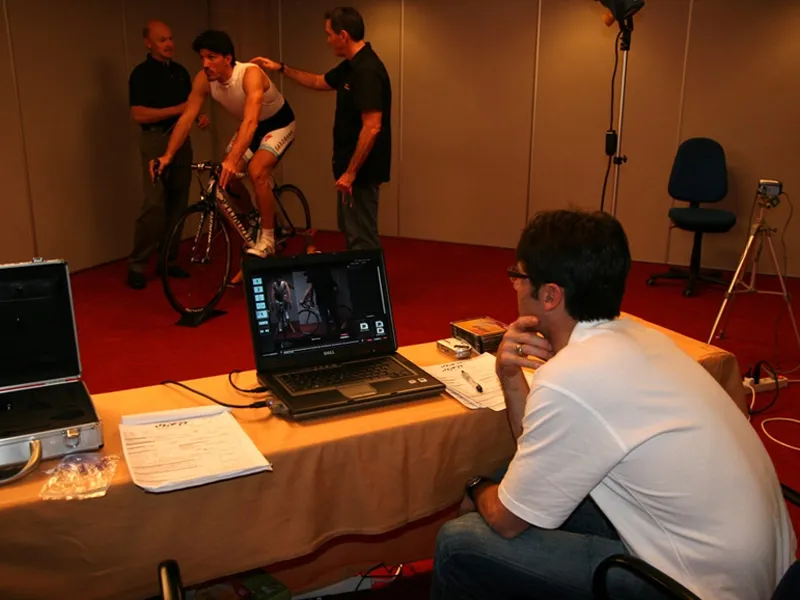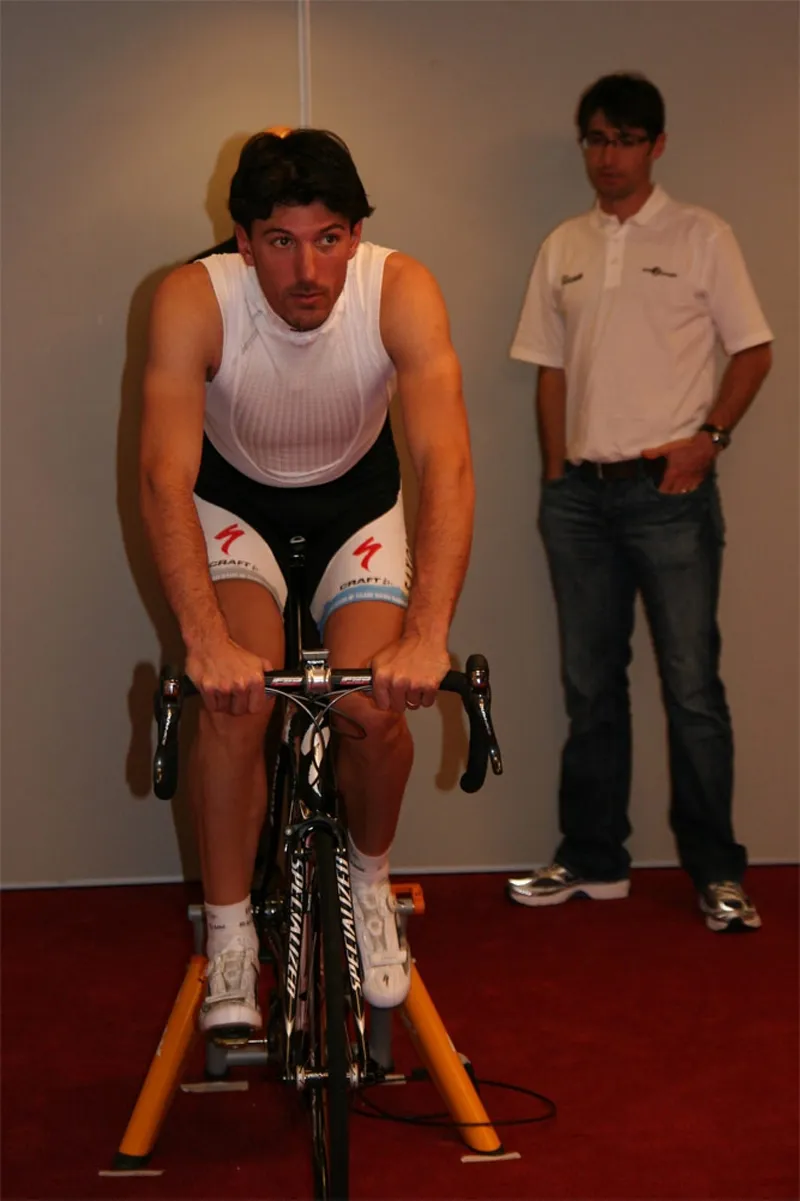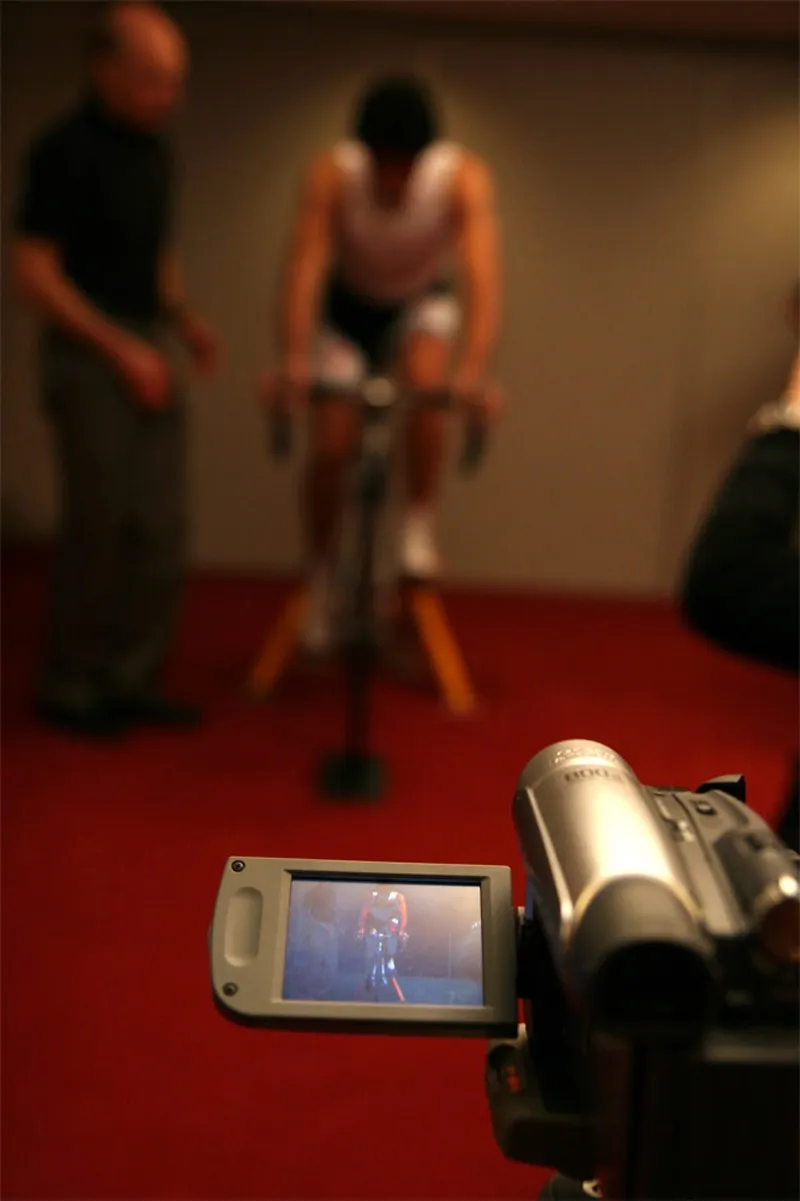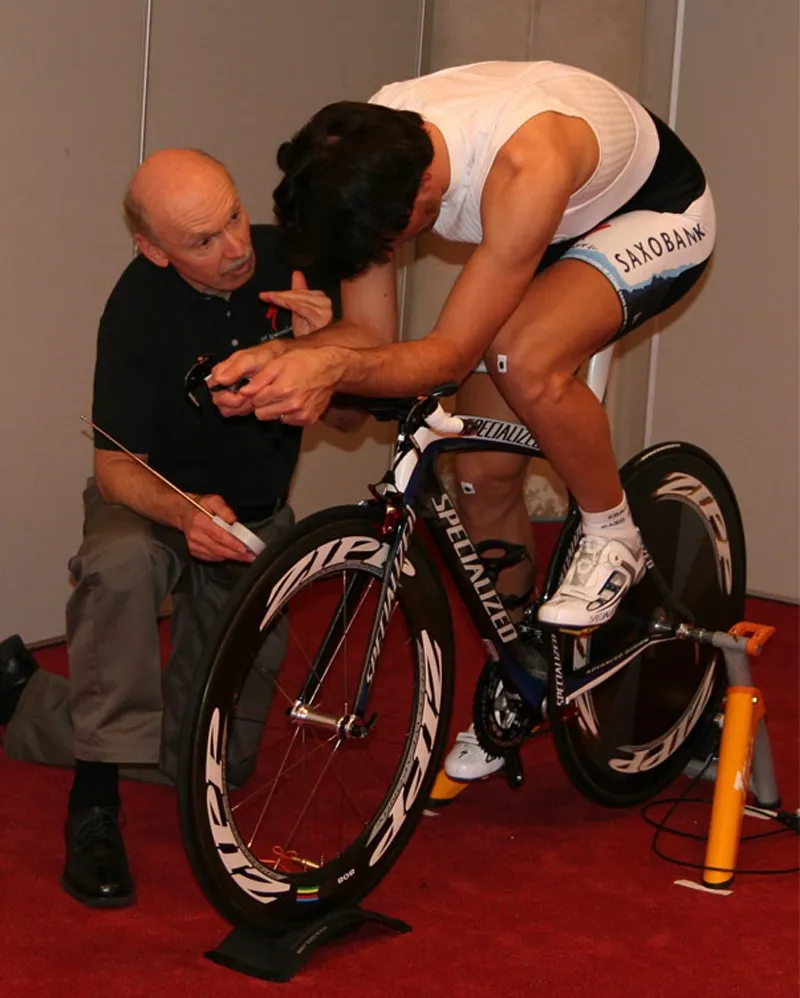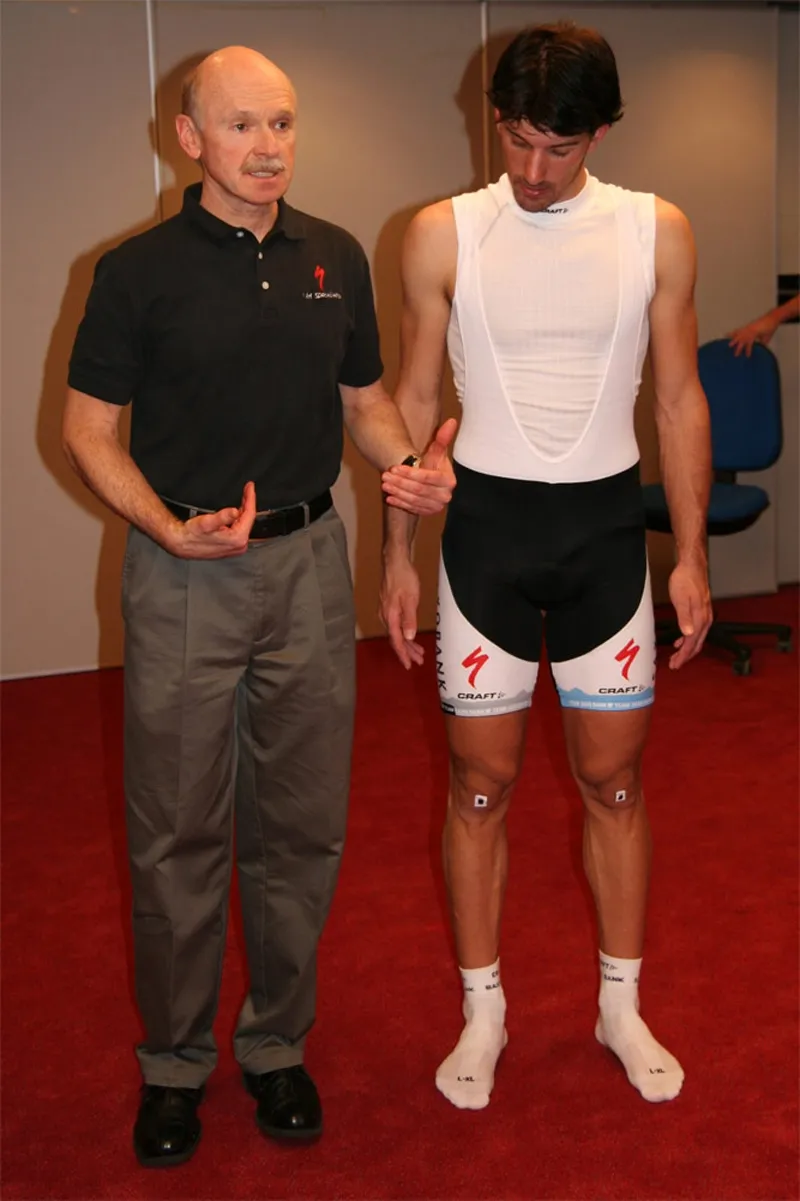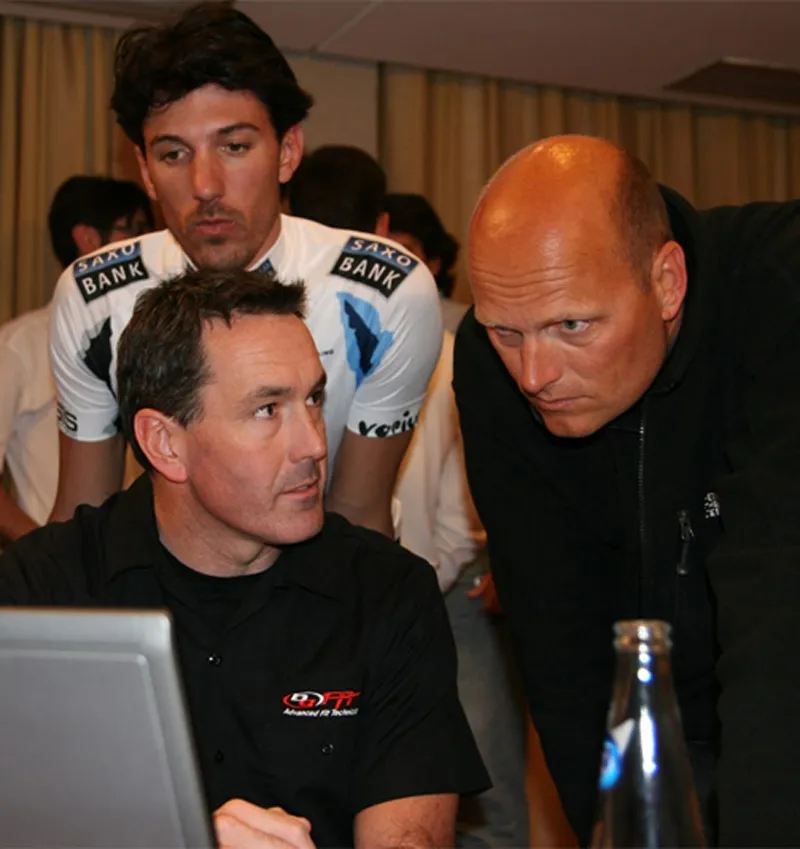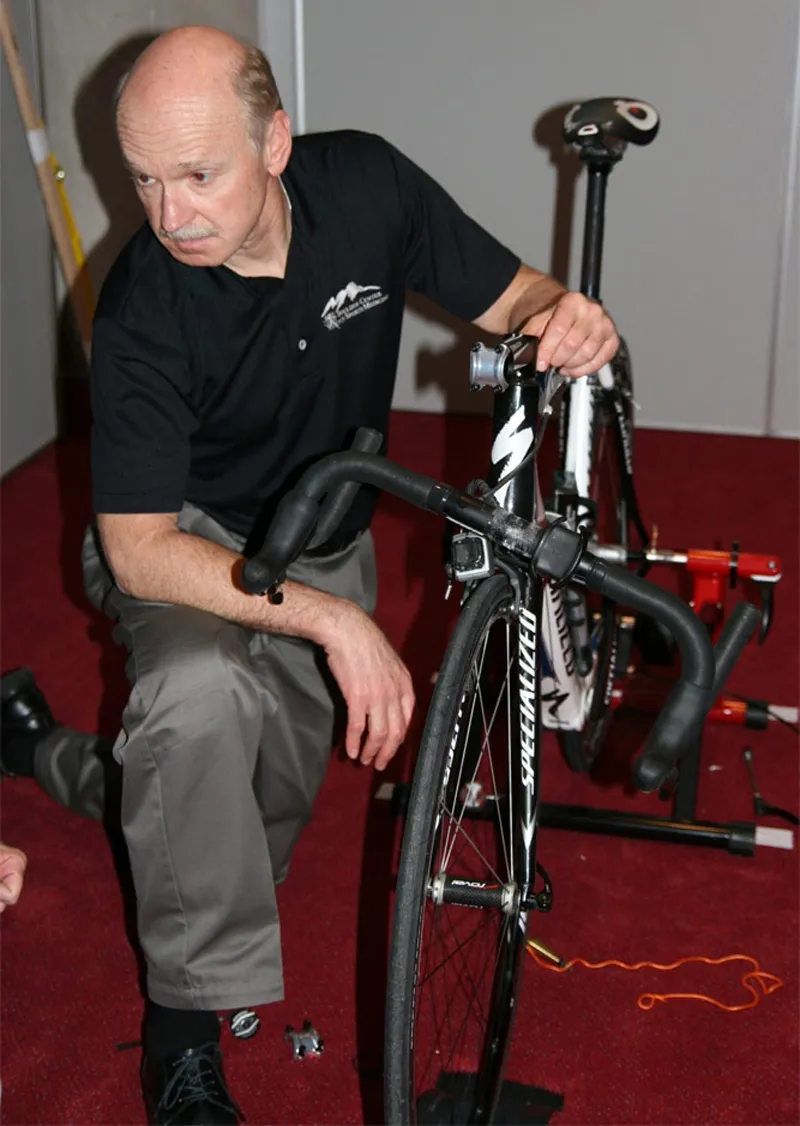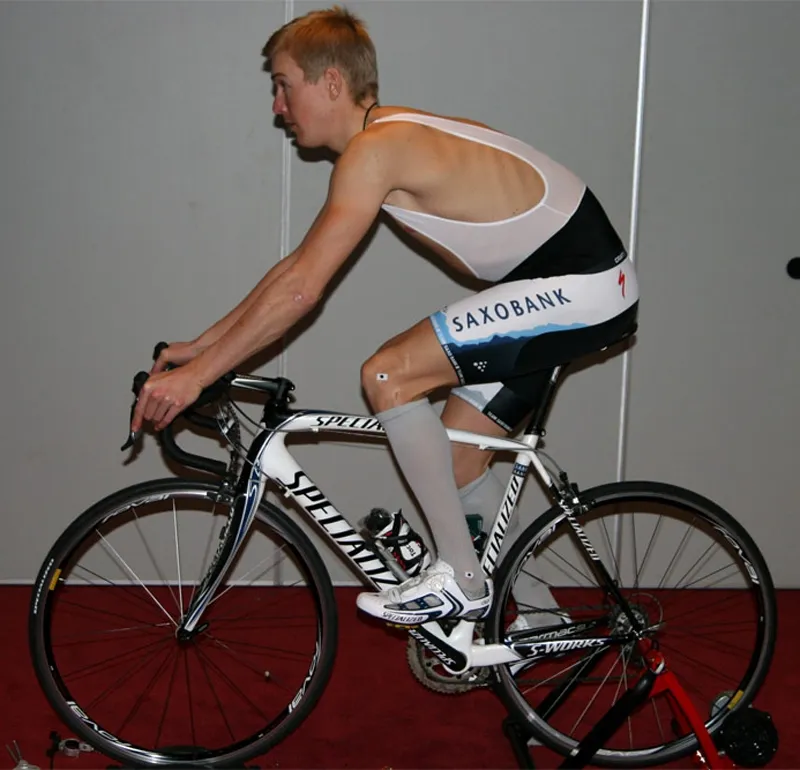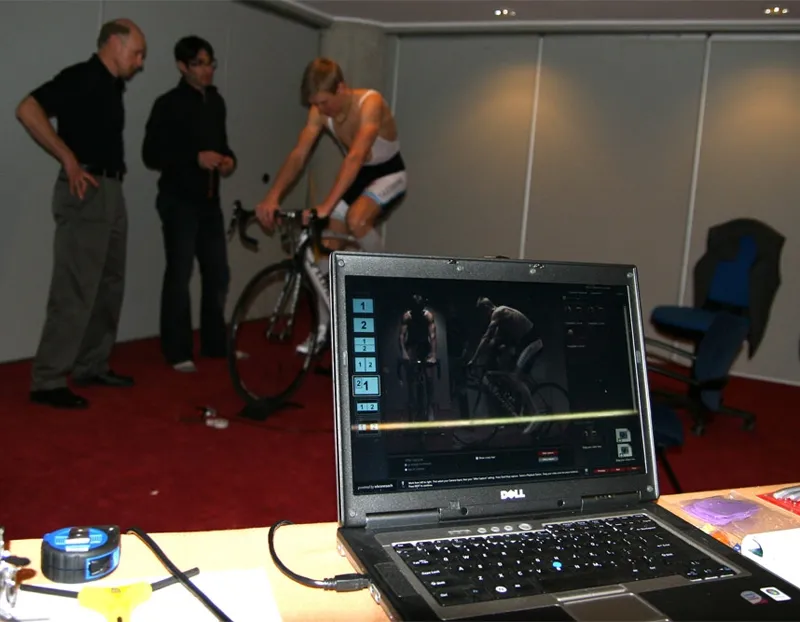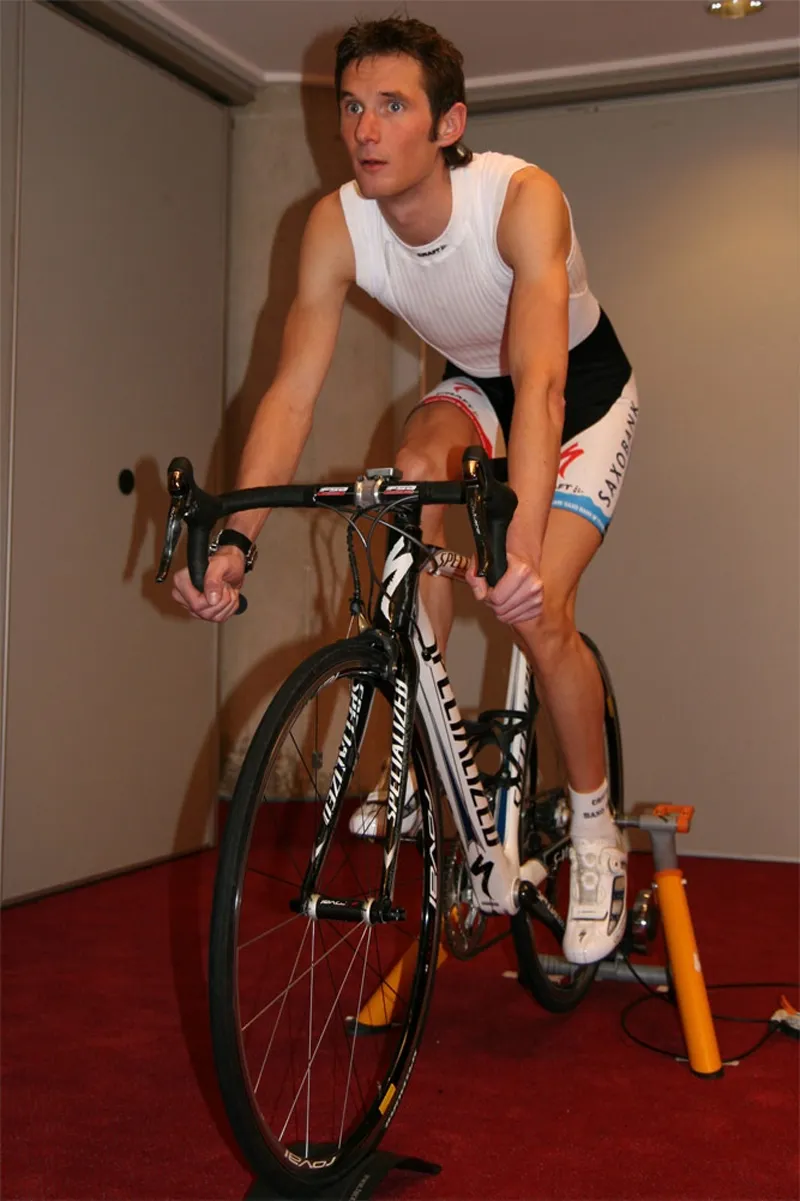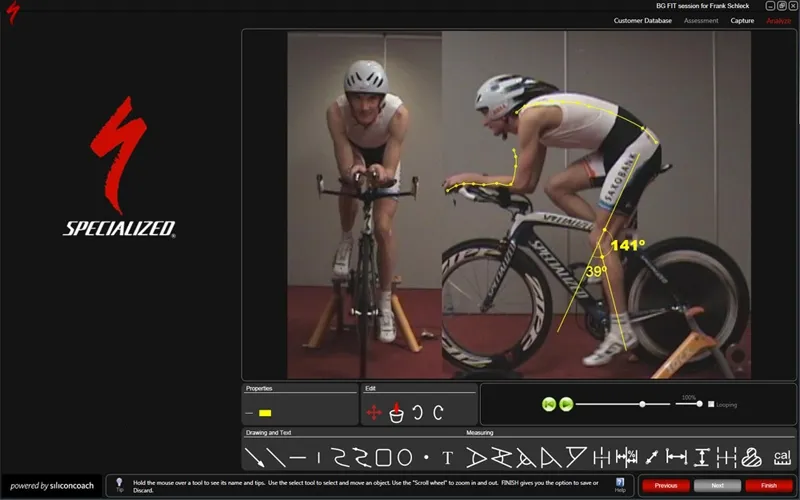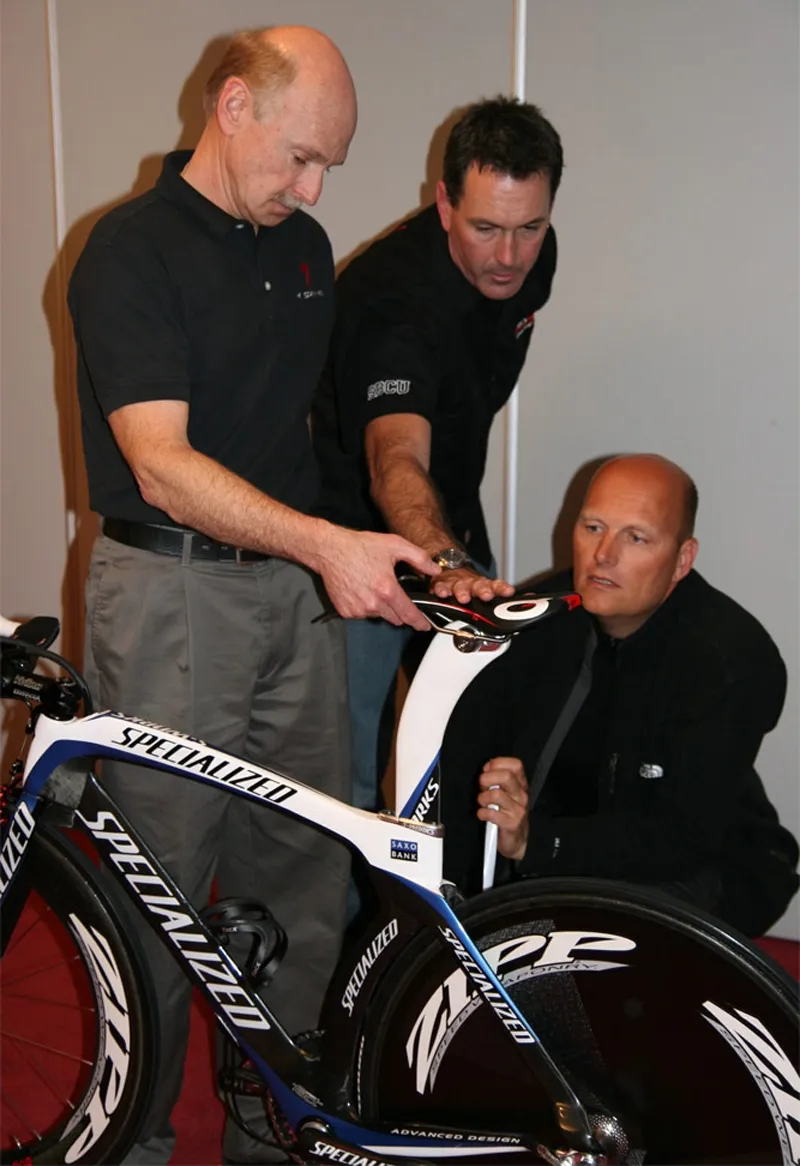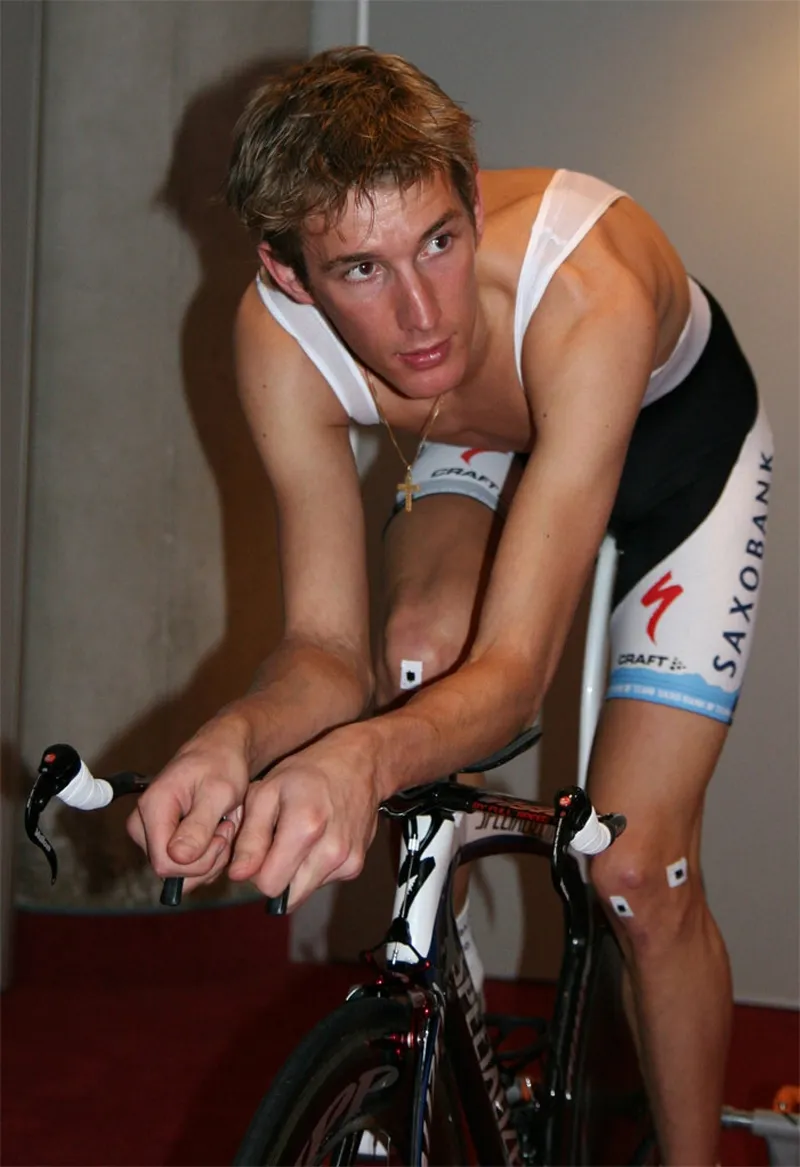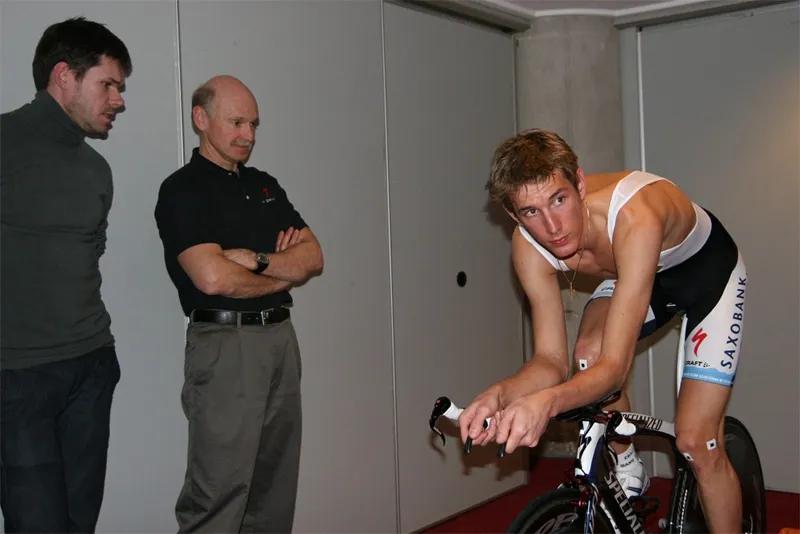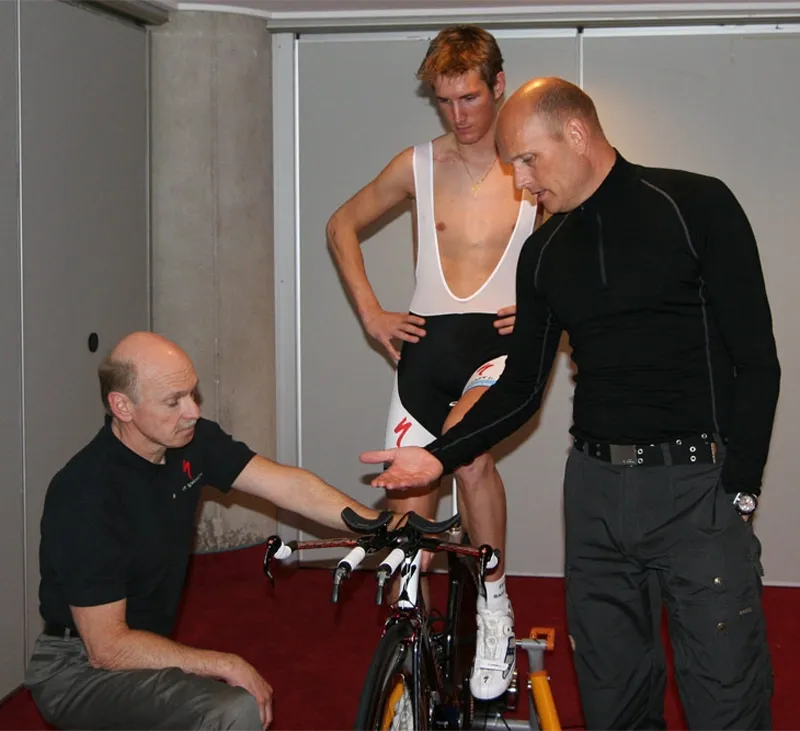Comfort, efficiency and performance all matter when it comes to joining rider to bike. Hoping to gain any edge over the competition, the entire Saxo Bank team is using the Specialized BG FIT system this season. We look at several key riders undergoing their bike-fit sessions at the team training camp in Majorca.
With professional bike races being won on the tiniest of margins, where centimetres can mean everything after many hours in the saddle, there is a real emphasis on finding anything that can make the difference. Lighter bikes. Stiffer frames. Faster wheels. More aerodynamic clothing.
Wind tunnel testing has found favour in recent years, mainly used for time trials where the emphasis is on aerodynamics. But there can be a price to pay in terms of efficiency and comfort, and riders can't always stick to the recommended setup.
For pros who clock tens of thousands of kilometres per year, bike fit is of fundamental importance; not just for performance's sake, but also for comfort and avoiding injury.
So what is the Specialized BG FIT system?
The Specialized BG FIT (Body Geometry Fit Integration Technology) process takes a more in-depth approach to conventional bike fitting. Led by Dr Andy Pruitt of the Boulder Centre for Sports Medicine, the methods comprise a biomechanical assessment of each rider, on-bike analysis and modification of equipment and position to arrive at what they feel is the best possible balance. It uses video cameras, computer software, limb-mounted sensors, plus the expertise of people like Pruitt, a sports physician for 35 years, 'Senior Fit Professor' Scott Holz, and others. They also have trained Specialized dealers to carry out the same tasks, leading to a network of BGFIT assessors across the cycling world.
Why Team Saxo Bank?
As a rider and former Tour de France winner, Team Saxo Bank owner Bjarne Riis was known as someone who was fastidious about his equipment. He is curious about what BG FITS might do for his team, and to see if it lives up to its claims of a power and efficiency benefit.
"We cannot tell exactly right now, but I believe it will be of benefit," he said. "They are just small adjustments [being made] but small adjustments can also mean something. There are a few things that we look at that we have never seen before, never taken care of before, and I think it is interesting."
We documented the individual biomechanical variations plus the positional recommendations Dr Pruitt made to two Tour de France contenders and the world's top time trialist.
Fabian Cancellara – a study in strength and flexibility

Of the Saxo Bank riders seen, Olympic time trial champion Fabian Cancellara seemed to impress Pruitt most, biomechanically. He praised Cancellara's considerable flexibility and strength, which enable him to comfortably hold an aerodynamic tuck during time trials.
As is always the case, the BG assessment started off with an examination of the rider off the bike. Cancellara was judged to have good shoulder strength, and was then asked to touch his toes; he did more than that, putting the palms of his hands flat on the ground and earning praise from the assessor. His leg length was found to be equal.
He was then asked to lie on his back, straighten his leg and raise it upwards towards the vertical; he was found to have 85 degrees of angle on the right leg, with three more on the left. Pruitt was clearly impressed with this, saying that it was "very flexible for a big guy", while bringing his knees to his chest revealed what was termed, "huge glute [gluteal] flexibility," namely a right leg reading of 130 degrees and a left leg of 135.
Array
Pruit and Cancellara finding out if additional arch support is needed
Like the other riders on the Saxo Bank team, Cancellara will this year be using Specialized's Body Geometry shoes. His size 44.5 footwear had the standard 1.5 mm Varus Wedge slope built in, angling the feet slightly from the horizontal plane.
Once on his road bike, Pruitt checked his symmetry and existing position. Cancellara was seen to have a tendency to sit with his right hip slightly forward, and to roll his right knee inwards under pressure; an additional 1.5mm shim was suggested for the shoe on that side and that, plus a recommended change to the more supportive blue Specialized insoles, led to a straighter tracking of his knee.
Good news for Cancellara: Due to his flexibility and strength, his time trial position can actually be set lower than it currently is. Pruitt favours three settings for time trials; the lowest, most aerodynamic is for prologues, the intermediate is for time trials up to an hour long, and the highest is for anything longer than that. Cancellara's current position actually fits into this third category, and so he can go lower (and become more aero) with no loss in power. The expected increase in speed is good news for him, and bad for his time trial rivals.
Overall, Pruitt was very impressed. "You are truly made to be a time trialist," he told the Olympic champion.
Frank Schleck – making the most of strengths
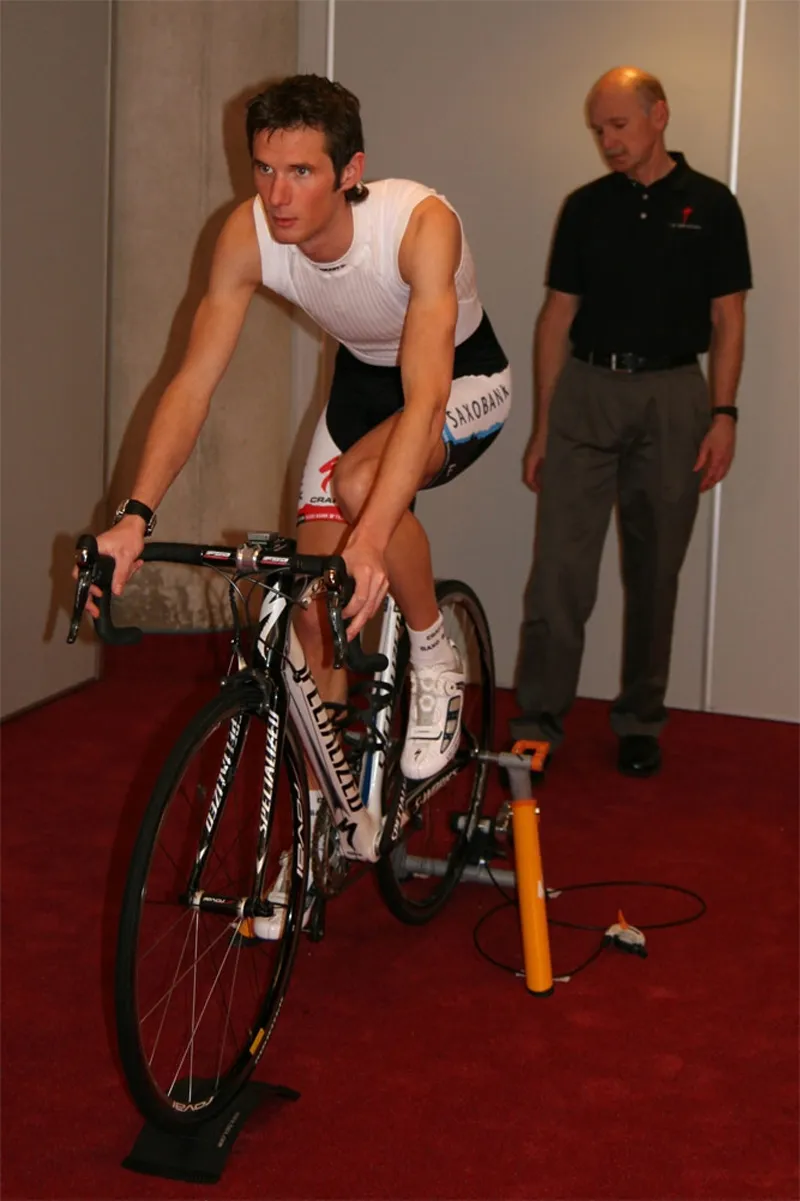
In contrast to his team-mate, Frank Schleck had poor flexibility in places and this required bike changes in the opposite direction. Unable to touch his toes when standing, his straight leg raise while lying down saw him achieve a 75% angle, compared to 85 and 88 degrees for Cancellara.
"That's not good for the time trial bike," said Pruitt, referring to the restriction this would place on his hip and trunk when he was at the bottom of the pedal stroke. However this was contrasted with a better degree of flexibility when his knee was brought to his chest. The numbers here were 130 and 128 degrees for right and left legs, a little closer to his team-mate's reading.
The short hamstrings are something that will affect how flat Schleck's back can be in a time trial. "Once in a while I do some stretching," he said when asked, the tone of voice suggesting that it was the exception rather than the rule. He has been asked to do more of this in future.
Schleck also has what Pruitt termed 'very flexible feet',which stops him having a good foundation to push on the pedals and makes shoe choice crucial. When Pruitt asked him to stand on one leg in socks and lower himself towards the floor; as his supporting knee bent, it swung inwards, showing how his flat, flexible feet prevented knee stability.
Both Schleck brothers also have a natural mild internal femoral rotation, further increasing the importance to have the correct setup of shoes and pedals.

Schleck's saddle was raised slightly and his stem was shortened
Schleck told Pruitt that he experiences a sore neck while riding. Once on the bike Pruitt tackled the reason for this, raising his bars slightly and also fitting a stem which was 10 mm shorter than before. Schleck had previously tended to grasp the bars behind the hoods, but appeared much more comfortable after the change was made. The expectation was that his shoulders would feel less of a strain in future.
Schleck's knee stability was addressed by the recommenced use of blue Specialized BG insoles in his shoes, plus the use of a 1.5mm Varus Wedge. He was filmed while riding under load and, via analysis of the angle difference between his upper and lower legs when at the bottom of the pedal stroke, it was determined that his saddle was too low. However, his short hamstrings ensured that the raising of his saddle was compensated for by an equal raising of his heel; he pointed his toe more, maintaining that slightly inefficient leg angle.
Pruitt's recommendation saw his saddle raised by three millimetres, with more elevation of that possible when Schleck carries out the recommended stretches. "At the moment, we can raise it all we like and he'll keep just pointing his toe more to overcome that change," he said.
His time trial position was also changed, with the saddle height increasing slightly and his handlebars going up by a greater amount. The latter would have a small effect in increasing drag but, according to the BG crew, it should be more than compensated for via an increase in power. That's good news for Schleck, who traditionally has lost time to his rivals in races against the clock.
Andy Schleck – grooming a major Tour contender?
Array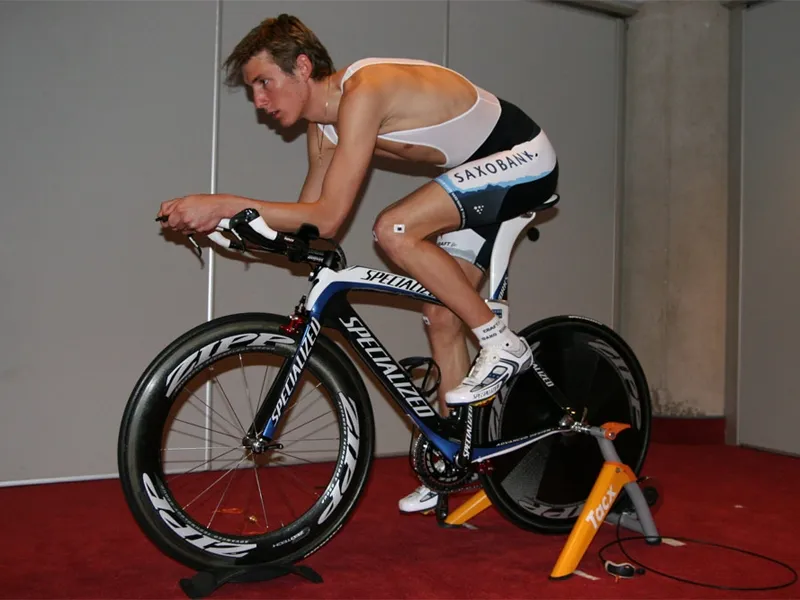
Although Schleck has limited flexibility, he is able to get fairly aero on the bike
Andy Schleck had some similar characteristics to his brother. He too had what Pruitt termed "a mild internal femoral rotation" and flat feet. His hamstring flexibility was even worse than Frank's, with his fingers being several inches away from the floor when leaning forward towards the ground. When lying down, this led to a thigh angle of 70 %, considerably less than Cancellara.
ArrayFurthermore, an approximate 11 mm difference in leg length was determined, with his right tibia being shorter than the left. A 5mm lift under his shoe was recommended to help compensate for this.
Andy's glute flexibility was slightly less than that of Frank's, with 126 and 128 degrees being measured for his right and left sides. The strength of that muscle was found to be weak.
In contrast to time trial specialist Cancellara, the Schleck brothers excel on other terrain.
"Their power is really their strength-to-weight ratio on the climbs," Pruitt explained. "We want to make sure that they don't lose time in the time trial stages. So we have to make the best advantage of them on their time trial bikes. Bjarne believes – and I don't disagree – that he wants to mimic their hip and knee angles from the road bike. We just roll them forward and maintain their exact same sacral, knee and ankle angles into the most aerodynamic position we can take them into, keeping that power position."
"Although Andy is not flexible, we are going to end up dropping him lower than where he had been. We were able to roll him forward and when we dropped his elbows, that dropped his shoulders and made him more aerodynamic. We will actually lower his stem. But we had to bring Frank the other direction to maintain those angles."
Other riders also benefit
Several other riders had adjustments made, with some of those details as follows:
Lars Bak: Perhaps the most dramatic example of how the Specialized BG FIT can work was with Bak. He had several issues, including a visible twisting of his pelvis when riding, complaints of soreness inside his legs and on the right side of his back, plus a visible hunch on his mid-lumbar spine.
Pruitt adjusted his cleat in order to move his left foot forward, and put an additional 1.5mm wedge in Bak's right shoe. This caused him to straighten up on the bike.
The decision to raise his stem had a dramatic result. The Dane had been riding with the stem too far down, coping by locking his arms. His new position allowed him to support himself better, straighten his lumbar region and actually saw his head and back become lower by 2.5 – 3 centimetres. This should be both more comfortable and more aerodynamic.
Array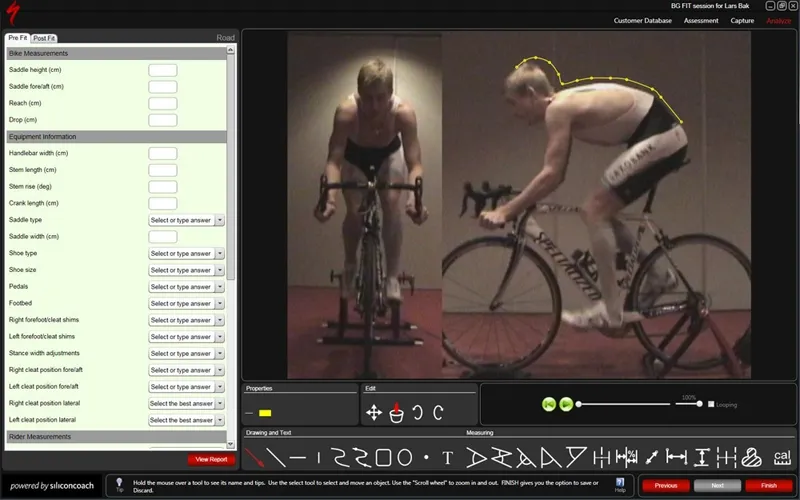
By raising his stem 1cm, Lars Bak's position became lower and more aerodynamic
Gustav Larson: The Body Geometry assessment led the crew to raise both his bars and saddle on his time trial bike by two centimetres. "This gave him a better leg extension through the power stroke," said Scott Holz, who added that his frontal area remained essentially the same.
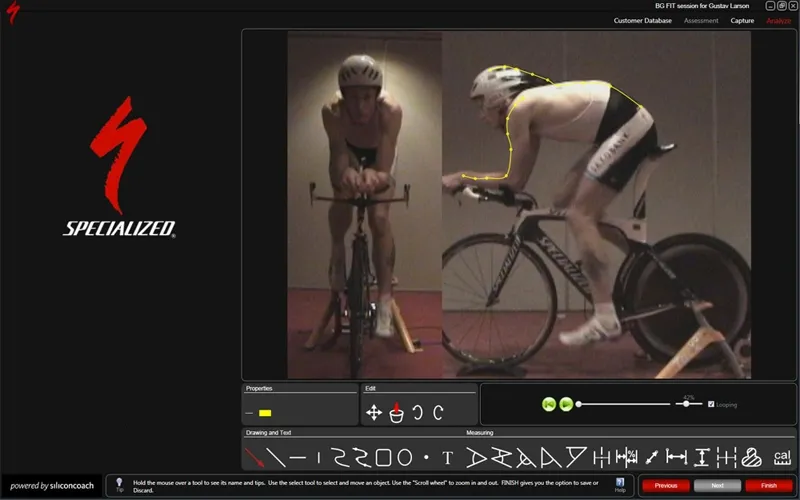
Gustav Larson's position was raised 2cm, opening up his leg angle and allowing him to put out more power
André Steensen: The Dane had been experiencing pain in his neck and lower back. By shortening his stem by one centimetre, he became more relaxed while still maintaining the same low back profile.
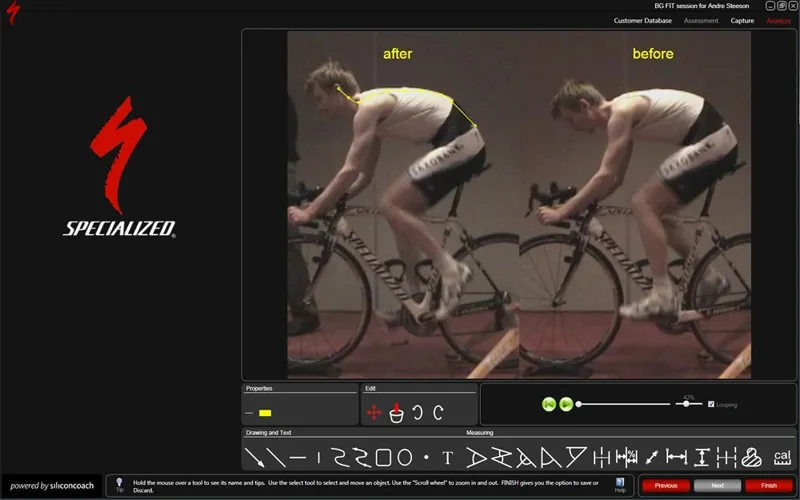
André Steensen had been experiencing pain in his neck and back. By shortening his stem, he became more relaxed
Looking for percentages
The season ahead will enable the Saxo Bank riders to see if their BG FIT adjustments have made a significant change. Pruitt is confident that there will be clear benefits. "It typically does translate into higher speed," he said. "They will be faster, longer, because they are comfortable. They may also be faster for short efforts."
Not all of the Saxo Bank riders were assessed at the training camp in Majorca. Another BG FIT session will be done at the team's upcoming training camp in California. Pruitt said that the next assessment in California would include some wind tunnel measurement, but that the overall holistic approach will be maintained.
"Full aerodynamics will mute physiology, it will suffocate you. A lot of directors just come along and slam everybody's stems right down, thinking they are aerodynamic. But the bike needs to look like the rider, not the other way round."
About Dr Andy Pruitt
Dr Andy Pruitt, EdD, PA, is the Director of the Boulder Center for Sports Medicine. He is a former cycling competitor and has been in Sports Medicine for 35 years. His biomechanical interest started while he was at the University of Colorado, and in 1985 he began working with an Israeli biomechanist in digitising and analysing data on cyclists.
In the years since he has dealt with a huge number of cyclists, including big US names such as Lance Armstrong, Greg LeMond, Floyd Landis, Bobby Julich and Christian Vande Velde, plus the Italian rider Damiano Cunego. He is regarded as arguably the world's foremost authority on bike fit, and has a long running association with Specialized. He played a big role in designing the company's Body Geometry shoes, which feature a number of ergonomic enhancements.
For more info, see cdn.specialized.com/bc/microsite/bgfit/bgfit.html

